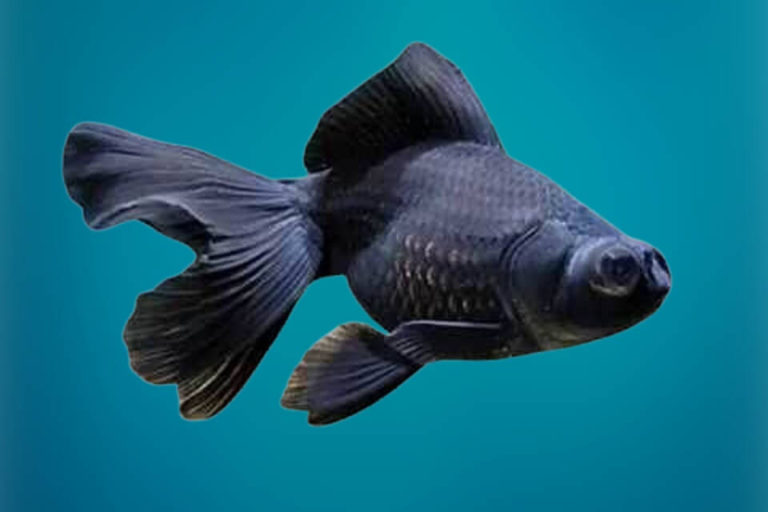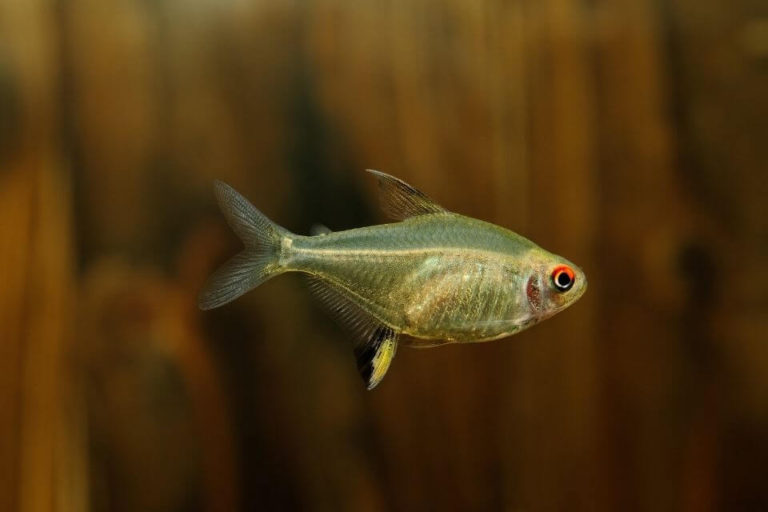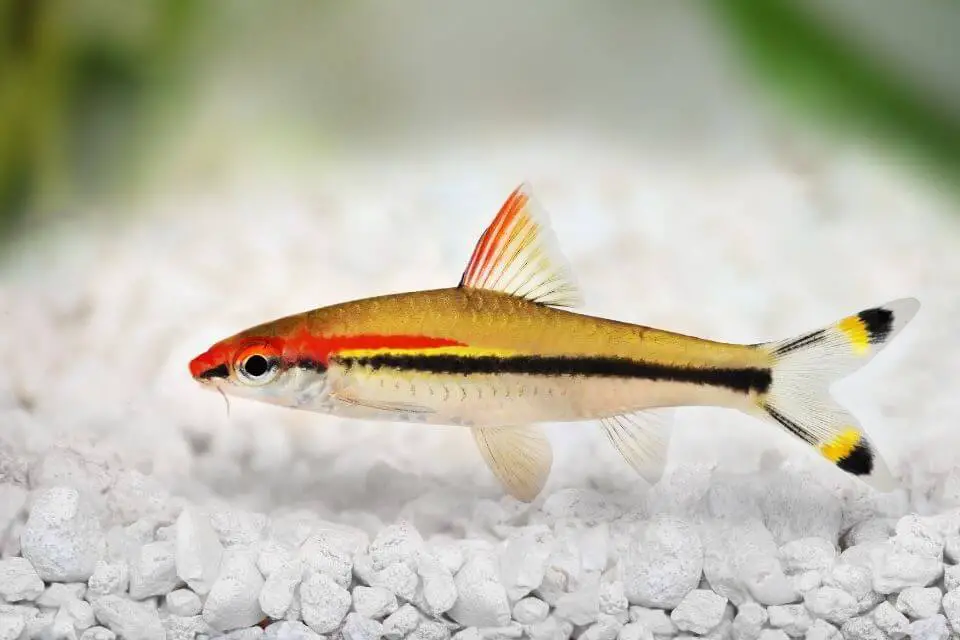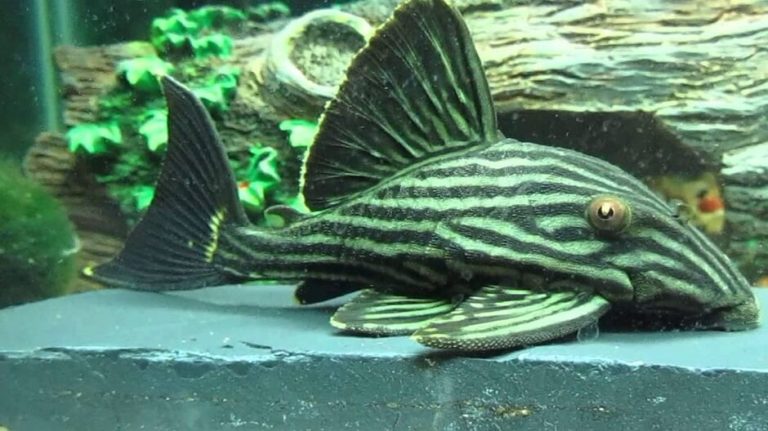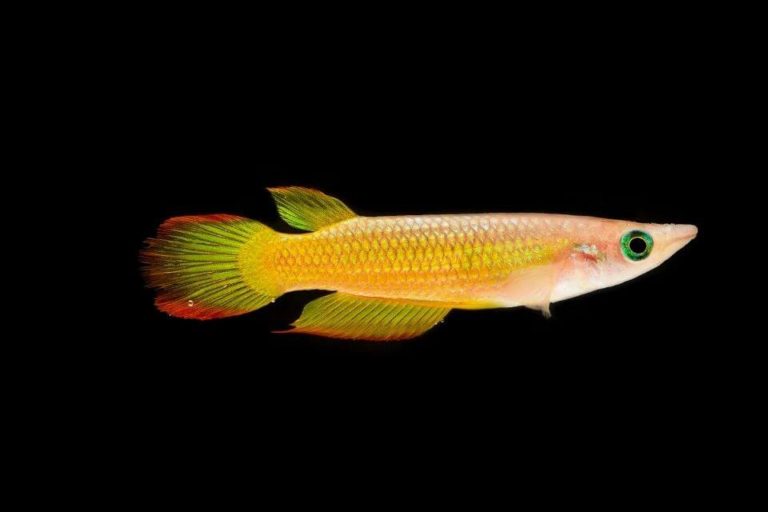Chili Rasbora Care 101: Best Tank Mates, Tank Size, Feeding, Tank Setup
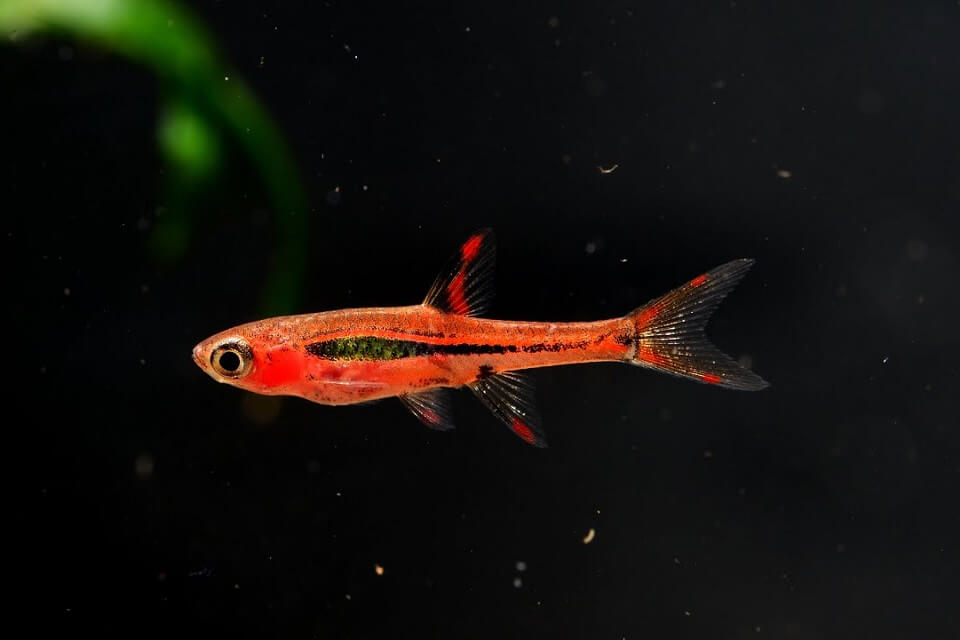
Chili Rasbora is one of the bright-colored freshwater fish species that you can keep with small-sized tank mates because of their tiny size. It does not require large tanks and is one of the best choices for a beginner fishkeeper.
Once you have a fish tank, you may be confused about the aquarium fish to rear. With the numerous kinds of fish in the market, choose one suitable for you.
Among the various fish species ideal for your fish tank is the Chili Rasbora, commonly referred to as Mosquito Rasbora and scientifically known as Borabas Brigittae.
This beautiful fish species helps brighten your living space and keeps you entertained. Read along with this Chili Rasbora Care guide to understand why you need this stunning fish in your tank.
| Quick Facts: | |
|---|---|
| Common Names | : Chili Rasbora, Mosquito Rasbora |
| Scientific Name | : Borabas Brigittae |
| Family | : Cyprinidae |
| Origin | : Swamps of South West Borneo, Indonesia |
| Care Level | : Easy |
| Lifespan | : 6 - 8 years |
| Size (average) | : 0.6 - 0.8 inches long |
| Diet | : Omnivores |
| Breeding | : Egglayer |
| Social | : Schooling fish |
| Temperament | : Peaceful |
| Minimum Tank Size | : 5 gallons |
| Temperature | : 68 - 82° F (20 - 28° C) |
| Water Hardness | : 3 - 12 dKH |
| Water pH Level | : 4 - 7 |
Overview of Chili Rasbora
It is scientifically known as Boraras Brigitte. These outstandingly beautiful fish consider nano fish because of their tiny size. This species is a popular fish among most aquarists as compared to several other species.
Chili Rasbora is also referred to as Mosquito Rasbora and Brigittae Rasbora. This vibrant fish species has exclusive schooling behavior, a small size, and a peaceful disposition.
Therefore, this fish can stand out in any planted aquarium and is significant in a peaceful community aquarium. The male species always display a bright ruby-red color when under an optimal diet and care.
This tiny freshwater fish species belong to the Characidae family. They were originally found in slow-moving rivers and streams in Southeast Borneo.
Although they are not hard to look after, they give fish enthusiasts a unique challenge. Why? Because they have strict requirements, you need to adhere to them to reach their full potential.
Chili Rasbora Lifespan
The average Chili Rasbora lifespan is 4 to 8 years. The Chili Rasbora lifespan will depend on the care and the aquarium’s condition. It is important to maintain optimal water quality and a healthy tank environment for them to live longer.
Chili Rasbora Size
The typical Chili Rasbora size of newly hatched fries is approximately one-fourth of the adult Chili Rasbora size. Upon its maturity, the fish will be up to the size of 0.78 inches (2 cm).
Although in rare cases some Chili Rasbora size is believed to reach up to 2.54 cm or one inch in their full-body length. The size of these fish species makes it favorable for you to consider keeping a large school of these vibrant fish species.
You need to understand that the fish are deceivingly small.
Chili Rasbora Typical Behavior
The Nano fish can survive well in a heavily planted fish tank. However, it has distinct typical behavior you need to understand. It majorly prefers large schools most of the time.
Keeping a small number will be unsuitable and can lead to stress. They swim, play, and live together. This fish species swim over short distances and in intervals, which is unlike many other fish species.
Appearance and Colors
You will note the characteristics of the fish species from different aspects. They can be evidenced in the anal, dorsal, and tail fin. Its fins are translucent, which gives the species a floating appearance.
Visually, these species are relatively slender. They are wide in the midsection, and to the large tail fin, the body tapers off. You will love the distinct appearance of the species.
Once you fix your sight on them, it will be reminiscent of you why most aquarists prefer them in their fish tanks or aquariums. Their bright coloration is one of their most defining features.
Just like the name Boraras Brigittae, you can relate that it has a blazing red shade. It covers the whole of their body with red and pink hues. Its’ red color is most evident and runs its body length.
However, the specter of red in males is more vibrant than in females. A thick band of black accompanies the red shade. The black strand is below the red stripe, which creates a significantly beautiful contrast.

The male species have bright red spots all over their fins. They are evident through the tail, dorsal, and anal fin. These fins are very translucent, which gives the tiny red spots a floating appearance.
The most apparent features of the species on the head are the two large eyes. This fish is fairly slender compared to several species.
Chili Rasbora Care and Tank Setup
The fish tank conditions need to mimic the fish’s natural habitat, made up of dark water, plants, and logs. Maintaining the stability of the tank is essential.
The species is likely to thrive best in a clean tank that has a stable temperature and chemistry. You should change the water frequently to prevent the fish from being stressed. Ensure that you clean it regularly for the better survival of these nano fish species.
– Chili Rasbora Tank Size
Once you are set on keeping these species, you need an appropriate Chili Rasbora tank size. The tank size does not have to be small, as it will affect the species’ survival.
The minimum tank size that is recommended for the species is 5 gallons tank for a single fish. Therefore, you do not need to own a large tank to maintain them.
However, you can get a large fish tank if you are looking to keep a school of Chili Rasboras with other tankmates. It is best to have a fish tank of about 25 gallons for a community of small fish species including Chili Rasbora fish.
The large tank also seeks to accommodate the number, as the fish do best in large groups. The large tank provides additional swimming space for the fish.
– Chili Rasbora Tank Setup
On the tank setup, ensure you are keen to enhance significant survival for your species. It would be heartbreaking to acquire the Chili Rasbora, and they die within the shortest period. Therefore, work on providing the best environment for the fish in the fish tank.
You can use a dark substrate at the bottom. You can make use of sand or fine gravel. These act as the floors of the blackwater ponds that are leave-covered. You can add some floating plants and driftwood as well.
These fish species have a great interest in plants; hence they will spend most of their time swimming and playing with the aquarium plants. They prefer a dark environment, which mimics their natural habitat.
Therefore, you need to acquire a lid for your fish tank to grant them a dark environment conducive to survival. Also, it includes hiding spaces for the fish and prevents fish from cramped feeling. Hence, it reduces stress on them.
Installing a tank top lid would be a great idea to prevent them from jumping out of the tank.
– Suitable Plants
You must add aquarium plants to the tank. Mosquito Rasbora loves the plants so much that and can spend most of their time swimming and playing in the leaves.
The plants provide a conducive environment and secret hideouts for the fish and significantly relieve the fish of stress.
Some of these plants include:
– Water Conditions and Parameters
When setting up an aquarium for these species, your goal is to recreate their native habitat. Therefore, make sure that the water is stained to create a dark environment and slow-moving.
However, please do not use dirty water, and ensure that the water does not have many nutrients as they are intolerant to excess nutrients.
- Chili Rasbora temperature ranges: 68 – 82 degrees Fahrenheit (20°-28° C)
- Water acidity: 4.0 – 7.0 (ideal pH is 6.0)
- Water hardness: 3 – 12 dKH
Diet and Feeding of Chili Rasbora
You may think that the Chili Rasbora is a picky eater. However, the reality is the opposite of your perception. Once the fish have settled, they will accept every kind of live food and micro pellets.
The micro fish species prefer their diet to be on the carnivorous side, unlike any other diet. The fish mostly consume Daphnia, Tubifex, Mosquito larvae, Baby Brine Shrimp, and other well-known micro worms.
Some favorite foods for them are Grindal worms and Brine shrimp. These Grindal worms are easily caught even by beginners, and they are a significant source of protein for the fish.
When feeding the fish, there are several guidelines you should put into consideration.
These include;
- Ensure you defrost any frozen food and rehydrate the freeze-dried ones before giving it to the Nano fish.
- The prepared bites are not supposed to be too small or too big. The mouths of the fish are relatively small. Therefore, ensure that they are sizeable to suit them. Too big bites will be hard for them to eat, while too small bites may disappear in the water, making the Nano fish starve.
- It would be best if you fed this fish probably once a day. It will ensure that they do not starve are they are well-maintained. Also, skip feeding them once a week.
- Avoid dropping a lot of food at one time. When you do that, the fish tend not to bother to look for food near the substrate. Also, they will not eat the food because it will be too much.
Sometimes, the fish will decline to take any food offered in the first days. Once you notice this, you do not have any reason to worry. Some of these fish species can stay even for a week without eating.
After the fish species are comfortable in the tank, it will accept all kinds of food offered to them. You realize that the fish will start coloring as well.
The period the fish declines specific foods can last even for a month. Hence, if you notice they are picky eaters, bear with the situation as it will be okay with time.
Common Diseases
Several circumstances, such as insufficient cleaning of the tank, lead to illness and disease in the fish. The several conditions include; fungal infections, parasites, and bacterial infections.
The most common disease symptoms in the fish are; bloating, grey spots, discolored scales, bloody streaks, and scratching. These diseases include Ich and Columnaris.
Therefore, be careful to protect your fish from these diseases. Ensure that the water is always clean and within acceptable parameters. Once you notice changes in the fish, you can change the water and clean your tank.
Tip: It is very important to take action to prevent disease before it occurs. I would recommend maintaining pristine water quality and proper water chemistry to minimize diseases and infections.
Chili Rasbora Gender Differences
For most living organisms, there is always a male and a female. In the same case, there are both male and female Mosquito Rasbora. To keep the species, you need to identify the gender differences.
Although the differences are small, they are easily noticeable. The male species have many bright red spots throughout their fins. The dorsal, tail, and anal fins are translucent with a floating appearance. The female fish has low contrast colors than the males.
Outstandingly, the female fish are more significant compared to the male ones. Unlike the females, the males have a bright appearance, which is evident from a distance. They are also round when compared to males.
Chili Rasbora Breeding
When it comes to Chili Rasbora breeding, it is merely an easy task. You do it on your own without professional help. The species are unceasing spawners.
Therefore, with the right conditions, they will regularly lay eggs. If you need to protect the spawns, craft a separate tank to breed them. Unlike most species, they are not parental such that they can eat or attack the fry.
You can put a lot of vegetation on the tank bottom. Faux grass is mostly recommended in this case. Once ready to lay eggs, the female fish will scatter them all over the tank bottom.
After the egg-laying, remove the parent fish from the tank. It will grant the eggs an opportunity to hatch. They hatch within a few days; hence you don’t have to wait for long.
In the first 24 hours of hatching, they feed on the egg sac, after which they can take microscopic food such as infusoria.
Chili Rasbora Tank Mates
You may need to keep the fish with other species. However, ensure that the species you settle for does not turn your Mosquito Rasbora into food. They are likely to be made food easily because of their small sizes. You can get the passive and the same sized as the Nano fish.
Some favorable Chili Rasbora tank mates include;
They can also be kept together with the Cherry Shrimp. Having Chili Rasbora tank mates can be a perfect idea but should be handled with great care. If you are not keen enough, your Nano fish may be extinct in the tank with time.
Origin, Distribution, and Availability
Chili Rasboras were initially found in the slow-moving blackwater rivers, ponds, and streams in Southwestern Borneo. They are the tiniest tropical fish in the aquarium market.
It’s not a true Rasbora; They were put in the Boraras Genus in 1993.
This tiny and stunning fish was initially described by Dieter Vogt in 1978 and named Rasbora Orophthalma brigittae after his wife, Brigitte.
Its alternate name Mosquito Rasbora was given because its natural habitat is full of annoying mosquitoes.
When comes to availability, most of the aquarium pet sellers carry Chili Rasbora for sale at a reasonable price. You might also be able to find eCommerce websites for Chili Rasbora for sale online.
FAQs
Are Chili Rasboras Hardy Fish?
This is a common question among aquarists. The fish species is adaptive to certain environments. However, adapting to specific environmental changes can take time.
This fish species tolerate the changes over time and slowly. However, the abrupt changes in their environment may not be well tolerated and can cause significant effects.
In the case you cannot maintain your fish tank stability, the fish species will be prone to illnesses. Therefore, you need to be considerate that the fish can withstand several conditions. Any change in the water can bring stress to the fish’s body despite its tiny body.
Is Chili Rasbora Aggressive?
How peaceful is the Mosquito Rasboras? It has been a point of concern for most people. These species are very peaceful as compared to various aquarium fish species.
When placed with other aggressive species, they suffer more and can even be eaten. Because of its less aggressive nature, make sure you keep it with a similar peaceful type of fish if you need to rear two fish species.
Are Chili Rasboras Fin Nippers?

They are rarely known to be fin nippers. With their peaceful nature, that is the least expected of them.
Therefore, when they have tank mates, the other species are safe, and you have no reason to worry. They are one of the species that do not nip fins on other fish species.
Will Chili Rasboras Eat Baby Shrimp?
As a baby shrimp keeper, it would be a great idea to keep them with the Mosquito Rasboras. It will be an added benefit to your fish tank. Chili Rasboras lack a strong hunting instinct; hence they will not chase after your baby shrimps deliberately.
If your baby shrimp comes across your Mosquito Rasbora by mistake, it will be eventually eaten. You will see week-old shrimplets being passed by Chilli Rasbora without being harmed.
As evidence, when there is a shrimp colony, it will not be possible for a school of Mosquito Rasboras to halt the growth numbers of the shrimps in the tank. Therefore, you need to consider whether your baby shrimp’s life is at risk or not before adding the Chili Rasboras.
It would be best to establish a shrimp colony in your fish tank first before bringing in the Mosquito Rasboras species. With this, you will be assured that the shrimp species will be more to overcome the predation from the Rasboras fish species.
However, when you decide on keeping your baby shrimp with the Rasboras, consider if the environment conducive for them. For instance, Crystal shrimp cannot survive with the fish species because it prefers soft waters, which is unfavorable to the Chili Rasboras.
How Many Chili Rasboras Should Be Kept Together?
Chili Rasboras stay in large groups. You can rear as many fish as you can depending on the size of your fish tank. The minimum number of fish to be kept together is six fish.
Once you decide to keep less than six Mosquito Rasboras, it will have significant effects on them. It reduces the lifespan and leads to stress on the fish as well.
Will Chili Rasboras School Together?
Yes, the Chili Rasboras can school together perfectly. They survive in a school of as many as possible, determined by the tank size. The minimum school of fish that is expected comprises six Mosquito Rasboras.
Their schooling behavior enables the keeping of the species in tanks with a short vertical length.
Can Chili Rasboras Live with Bettas?
Yes. The Chili Rasboras can live with Betta fish if there is enough room for them. You should also ensure that the tank has enough aquarium plants for the fish. However, the success of their survival can be determined by your Betta fish’s individual character.
There are Betta fish that are aggressive as compared to others. When you keep the aggressive breed, the chances for the survival of your Mosquito Rasboras are minimal.
Therefore, it is recommendable that you keep your Mosquito Rasboras with Betta Imbellis because they are peaceful and small-sized other than the most known Betta Splendens.
Betta Splendens are very aggressive, which will disturb your fish species. It will also depend on your fish tank size for their co-existence. For instance, in a 5-gallon tank, you can keep six Chili Rasboras and one Betta fish.
Therefore, ensure that there are enough live plants in the fish tank. It helps to break the fish’s line of sight. Also, the Betta type should be the peaceful type for the two species to co-exist.
Some of the best Betta fish to live with Mosquito Rasboras include; Betta Belica, Penang Betta, and Betta Persephone. Therefore, with the right conditions, the Bettas can live well with the Chili Rasboras.
Where To Buy Chili Rasbora?
You can find Chili Rasbora for sale in your local pet stores and also your local breeding facilities. It is effortless to find Chili Raspora for sale online on eBay or Amazon at about $9 to $15 per fish.
The prices are based on the USA Aquarium market and basically, prices depend on the country you reside in.
Final Thoughts
Yes, it is. With its superb coloration, it will be fantastic for your living room or office. They require minimal space for their setup; hence you do not need to incur extra costs getting a large one.
The upside is, you can keep it in the fish tank with other favorable species. Depending on the maintenance, the Chili Rasbora can live for four to eight years.




